Yim and I had been talking about hiking the Cinque Terres for years. This year, we finally made it.
Tucked between Genoa and Pisa, along a mountainous six-mile stretch of the Italian Riviera, lie the Cinque Terre.
The five towns that make up the Cinque Terre – Riomaggiore, Manarola, Corniglia, Vernazza and Monterosso – all began life as medieval fortified settlements, each protected by a castle overlooking the sea to guard against Saracen raiders. In the Middle Ages, the term Saracen meant any person—Arab, Turk, or other—who professed to the religion of Islām.
Today, the picturesque pastel-coloured villages have taken their well-deserved place as a UNESCO World Heritage Site.
Terraced gardens and fields that cut into the rock faces as far back as the Middle Ages add the charm, while a series of walking paths clinging to the cliffs offer some exceptional hiking. And despite the fact that this stunning corner of Italy is entirely traffic-free, it’s perfectly easy to make your way quickly from town to town thanks to a 19th-century railway line that traverses the coast via a series of tunnels blasted through the rock.
Manarola
Manarola is synonymous with the image of a picturesque village tumbling down a rocky cliff towards a little harbour below – it’s probably the most iconic view there is of the Cinque Terre, and it’s pretty much exactly what you get.
Built on a hillside, with colourful houses perched on terraced cliffs, the village centre consists of a main street that leads from the tunnel down to the harbour. Navigating the village is relatively straightforward, but be prepared for uphill and downhill walks. Signposts and maps are available to guide visitors through the village and to major attractions.
The route from the top of the town down to the waterfront will take you along their steep carrugi, the characteristically narrow laneway typical of Ligurian towns. An eclectic array of fishing boats were always pulled up on the ramp leading into the water, a reminder of the connection to the sea that has been the lifeblood of the Cinque Terre for centuries.
The promenade is lined with small shops, cafes, and gelaterias to indulge yourselves in local delights while enjoying the ambiance of the seaside. It’s a great spot to relax, soak in the coastal breeze, and capture stunning photographs of Manarola’s coastal splendour.
We were thrilled when we opened the door to our apartment and there was the Mediterranean Sea, right outside our window. There was the trail, winding around the promontory in the distance, where that perfect photo of Manarola was waiting to be taken.
There was the very place we had been talking about visiting for several years, right outside our window.
Within an hour of arriving, our friends from Victoria, Mark and Dorothy arrived and we all walked over to the trail to watch the sunset while catching up since we last travelled together, which was our trip to Newfoundland in 2022.
I’ve found that all vacations have a special moment and while the four of us were enjoying being back together and gabbing, we found a spot along the pathway to sit with the stone wall at our backs and watch as the sun clocked across the Mediterranean and continuously changed the complexion of Manarola, at first from a mutii-coloured village which you can see Yim standing in front of above, to a bright well lit village framed by a blue sky and finally, cast in a warm reddish glow.
We are very happy we chose Manarola as our home base. Of the towns we visited, we found Manarola to have the best flow. The town had several restaurants and one had a nice vegetarian menu, which we were both very happy to find. Manarola felt like a town to us, it felt lived in, local. One morning while having our coffee, we watched an older man tending to his terraced garden up on the cliffs opposite us, from our window. Later on, we walked up the same pathway to see how the gardens grew. That added some local context for me.
For those of you interested in visiting Cinque Terres, Manarola had three grocery stores and a wide selection of foods. It also had three bakeries and at least four Gelaterias. Each morning I wandered down our stairs to a small coffee shop, and picked up an Americano and two or three fresh marmalade filled croissants to start the days. While waiting, there was usually a contingent of locals in with me, catching up on local gossip and obviously enjoying each others company. I liked being able to see that part.
After dinner on our final day, we met Dorothy and Mark again and wandered down to the waterfront and watched the town as that low sunset lighting illuminated the colourful houses one last time.
Monterosso
It was raining on our first full day so we all decided to jump on the train and head to Monterosso.
This was a good introduction to the train system. We got on in Manarola and a few minutes later, we were in Monterosso.
Mark wanted to see the Il Gigante, which was originally built from concrete in 1910 to decorate the seaward edge of the elegant Villa Pastine. The 14 meter high image of Neptune holding the waves at bay quickly became a symbol of the town, and was photographed and shown on postcards of the era. I had no idea what this was so we followed down the promenade but there was not much on the cold beaches of Monterosso open in April or even half interesting so we were all just trying to stay warm until Mark got his photo.
From there, we headed north along the beach towards the Old Town. Old town and New town Monterosso are separated by San Cristoforo Hill and connected by a pedestrian tunnel, but there is also a pathway along the seawall and out around the promontory, which is a much more enjoyable experience.
This part of Monterosso was interesting. The historic old town is a tangle of atmospheric narrow lanes that hide plenty of restaurants. Winding cobblestone streets, shops, food market stalls, people out – a proper little town. It’s also home to brightly coloured houses, winding streets and steep stone staircases that are common to all five of the Cinque Terre Villages. We popped in and out of shops for a half hour and visited the striking black and white marble 14th century Chiesa di San Giovanni Battista, and Oratorio dei Neri (the Church of the Dead).
Once you’ve explored the colourful streets, head back up San Cristoforo Hill only keep going up this time to the 16th century Chiesa di San Francesco and the Capuchin Monastery. This is a very enjoyable walk and you can feel the history surrounding you. The path is cobbled so in spots its a bit irregular but overall, helps with footing if it is wet, which it was the day we visited.
The Monastery, built in 1618, is a marvellous place, with surrounding gardens which are cultivated by the monks. The Convent welcomes the faithful for spiritual retreats and the Friars organize activities with the schools to visit the religious complex and the Gardens. The day we visited, we could hear children and when we exited the church, the Friar was just sending them off for the day, which was a nice little snapshot of daily life.
We continued our climb further up the hill, and I found a spot to capture the village nestled below before we entered a cemetery, perched high above the sea. To each side of us were long rows of burial places, all with marble faceplates. Flowers had been placed on just about every one of them, even though some of the death dates were over a century ago.
Yim and I find cemeteries quite peaceful and we loved the sense that generations of locals were watching over their village from above. Very peaceful, especially with a soft rain falling. Beautifully maintained.
Vernazza
Both times we visited Vernazza, it was raining. Each time we funnelled down the main street under umbrellas.
It’s not difficult to get your bearings in diminutive Vernazza – it’s a single main street that charts a steep course downwards from the train station at the top of the town all the way to the water’s edge at the harbour. Along the way, the cobbled Via Roma is lined with cafes and bars, but most were empty on the days we visited due to the rain.
The waterfront, which has a beautiful and quite large landing at the base of the small natural harbour, is framed by a small Ligurian Gothic church, built on a small seafront promontory in 1318. According to legend, the church was constructed here after a box containing the bones of St Margaret washed up on a nearby beach. It is notable for its unusual 40 metre tall octagonal tower topped with a dome but Yim was completely taken by the fact that the interior of the church was raw stone – big obvious rocks with no effort being made to change that appearance. A rough hewn wood ceiling. The church seemed to Yim what a church should be; un-ostentatious and aesthetic in its own way, more spiritual. I agreed.
Plus, the views through the narrow arched windows were outstanding.
The tiny port is ringed with those picturesque pastel-coloured houses offset by the brooding presence of the Santa Margherita d’Antiochia church.
On our second visit, the sun decided to come out and after visiting the town, we headed up through a cluster of homes for the coastal path to Corniglia. First we had to climb up the steep hill through the village to the top of the town, where we had incredible views out over Vernazza and the surrounding coastline. The trail continued to climb slowly along the coast with the steep terrain dropping away to the ocean on our right. The coastline is absolutely spectacular, and as we got higher and higher, the views became even more breathtaking. Using the blue skies to frame our last look at Vernazza worked perfectly as a photo. I even caught the Italian flag blowing in the wind.
The trail flattened out once we got to a certain height, but the rough terrain still kept the trail dropping and rising. Before we knew it, Vernazza had disappeared and we were on our way to Corniglia.
Corniglia
Corniglia is the middle town of the Cinque Terre, and the only village of the five that you can’t see or approach by sea.
We hiked in from Vernazza along The Blue Trail. It was a beautiful day and we thoroughly enjoyed the chance to get outside and get some hiking in. The trail is a bit rocky and uneven, but it’s definitely doable for most levels of hikers. It winds you up and over spectacular views of Vernazza behind you and then through vineyards, olive groves and endless views of the Mediterranean Sea. It’s a very nice hike.
Along the way, we passed through a miniature village with an irresistible view.
Prevo was founded as a shepherds’ village in the 16th century and is part of Vernazza. The small hamlet is the highest point of the Cinque Terre National Park at 208 metres above sea level. Hiking in from Vernazza you are greeted by a pink wall along the trail. Right after that is the il Gabbiano. This is the legendary “lemonade stand” halfway point between Vernazza and Corniglia. They sell fresh squeezed juices as well as other cold beverages and treats. Go in, order a fresh lemon juice and enjoy it on the panoramic terrace. You may have to stand in line if it’s a hot day.
From there, Corniglia was almost always in view.
The hike took us 1.5 hours in total – and our friends who dawdled behind us took an additional half hour. Stopping at Prevo could add hours 🙂
Spectacularly situated on a promontory more than 300 feet above the sea and surrounded by vineyards and terraced gardens, Corniglia was once a prosperous agricultural centre and its historic centre is a maze of brightly-painted houses and narrow cobbled streets that seem immune to the passage of time. Via Fieschi, the heart of the village, is where you’ll find most of the bars, shops and restaurants. We found a cute little restaurant and sat down to lunch before spending a half hour wandering about.
Look out for the La Torre viewpoint at the end of the street for panoramic views along the Cinque Terre.
While we learned there is no such thing as a quiet Cinque Terre village, Corniglia seemed as near as you are could expect. It’s in the middle of the five villages, and has managed to keep a more laid-back, local feel than the others by being the hardest to get to. Because of its size and relative inaccessibility, fewer tourists stay here. It’s a very small village.
Since we were planning on catching the train from Corniglia to Riomaggiore, we headed off to conquer the Lardarina, a well built 382-step brick pathway that switchbacks its way down the cliff to the train station.
Riomaggiore
Riomaggiore, with a population of about 1,700 residents, is the easternmost of the five villages.
We had hoped to hike from Manarola to Riomaggiore but the Via dell’Amore Trail was closed when we arrived. We considered hiking the Blue Trail up and over but the rain was falling hard and long enough that we knew the path would be muddy and slippery so we took a pass and boarded the train.
When you arrive at the Riomaggiore train station, you have to be on the lookout for a long pedestrian tunnel which emerges into the centre of the old town. This area, which drops quickly in to the sea, is filled with shops, small restaurants, colourful boats (gozzi) and their drying nets, where you can enjoy the Mediterranean sun and watch the sunset, assuming the weather cooperates. Our first visit was in the rain so because we had the train pass, on our second afternoon, when the sun came out, we all piled into the train specifically to take some photos. I wanted that classic photo of the town so I scampered down over the rocks which line the sea at the foot of the town.
It was pretty crowded in this tiny town, which felt a little tighter and a little grittier than the other villages.
The upper part of Riomaggiore is the agricultural village (borgo dei contadini), which is surrounded by terraces. This is where you’ll find Via Colombo, the steep main street, with lot of steps on both sides. A simple walk around here is quite the workout. The main street is full of restaurants, bars and small shops and above the railway lines is a nice piazza, which is one of the few flat areas in the village. This is where kids are running around and playing soccer after school.
I liked the feel of this area because it felt lived in whereas the waterfront felt too busy for my liking.
Things to Know
The Cinque Treno Card. Before you head out on your hikes, you need to purchase either a Cinque Terre card in order to access the trails. You have a couple of options.
The first option is to purchase the Cinque Terre Trekking Card. This card gives you access to use the trails in the national park and to the local bus system.
Cost – €7.50/day per adult
Access – Unlimited access to hiking trails
Your second option is to purchase the Cinque Terre Treno Card. This is the option we chose because the weather looked like it might be iffy and the updates on the hiking trails was very poorly updated. This option gives you access to the train network, the bus system and the hiking trails. This worked out really well for us because it did rain off and on during our visit and rather than slog up and down the mountains in the rain, we visited the towns we wanted to see and got on the train when we wanted to. If the sun came out, we hopped back on to a different town. It was very easy.
Cost – €18.50 or less/day per adult
Access – Unlimited access to trains and hiking trails
Plus, with the Treno Card, you get FREE access to the toilets.
To purchase the cards, you can either book them online in advance, which we did or purchase them at the La Spezia train station upon arrival.
At the start of each trail, there is usually someone at a booth to check your card. Make sure to have your ID and card with you at all times just in case they ask to check your name on the card.
Book our apartment: If you are interested in staying where we stayed: Ca de Angelo.
Booking a Car: We used Discover Cars.
It was a good visit but we both wish the rain would have stayed away and the Via dell’Amore Trail would have been open. We really did want to hike rather than take the train around but that’s life.
That said, the sunset on our first night in Manarola made our stay. The beauty of being able to share those moments with friends is, as they say, priceless.
Off to Tuscany…

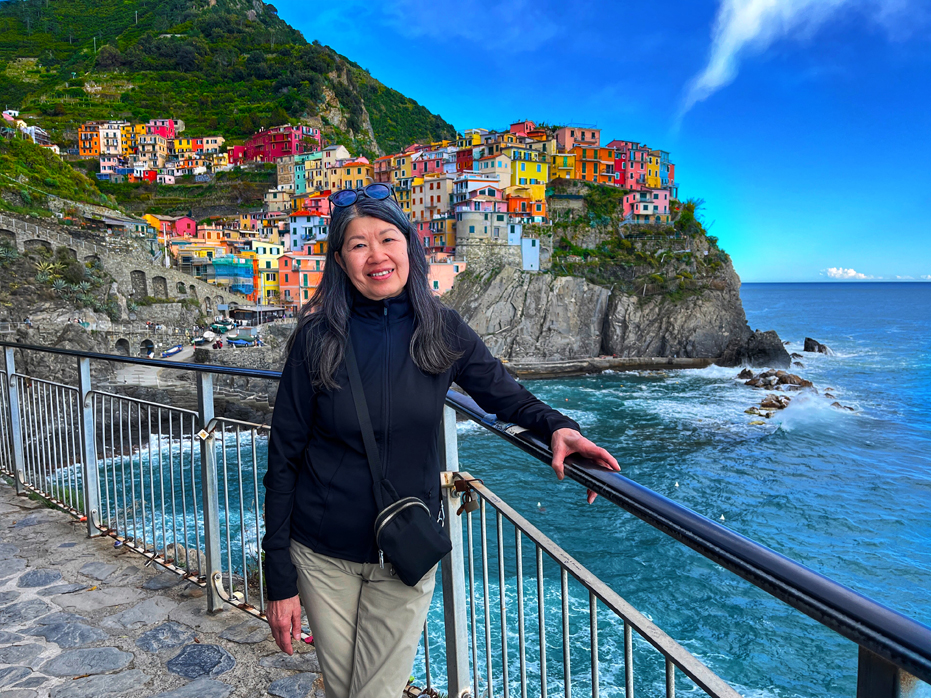
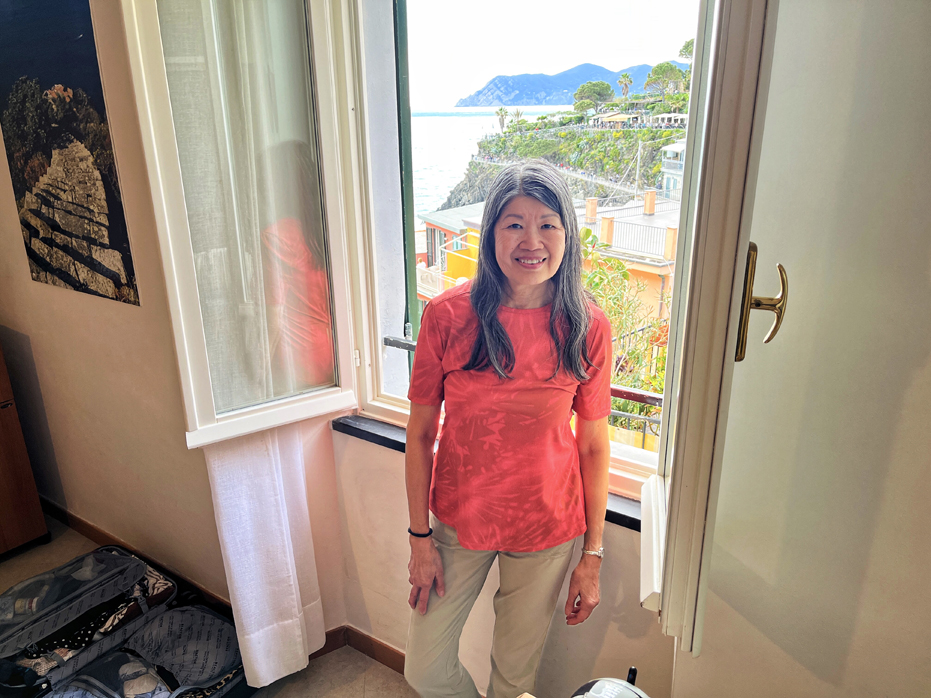

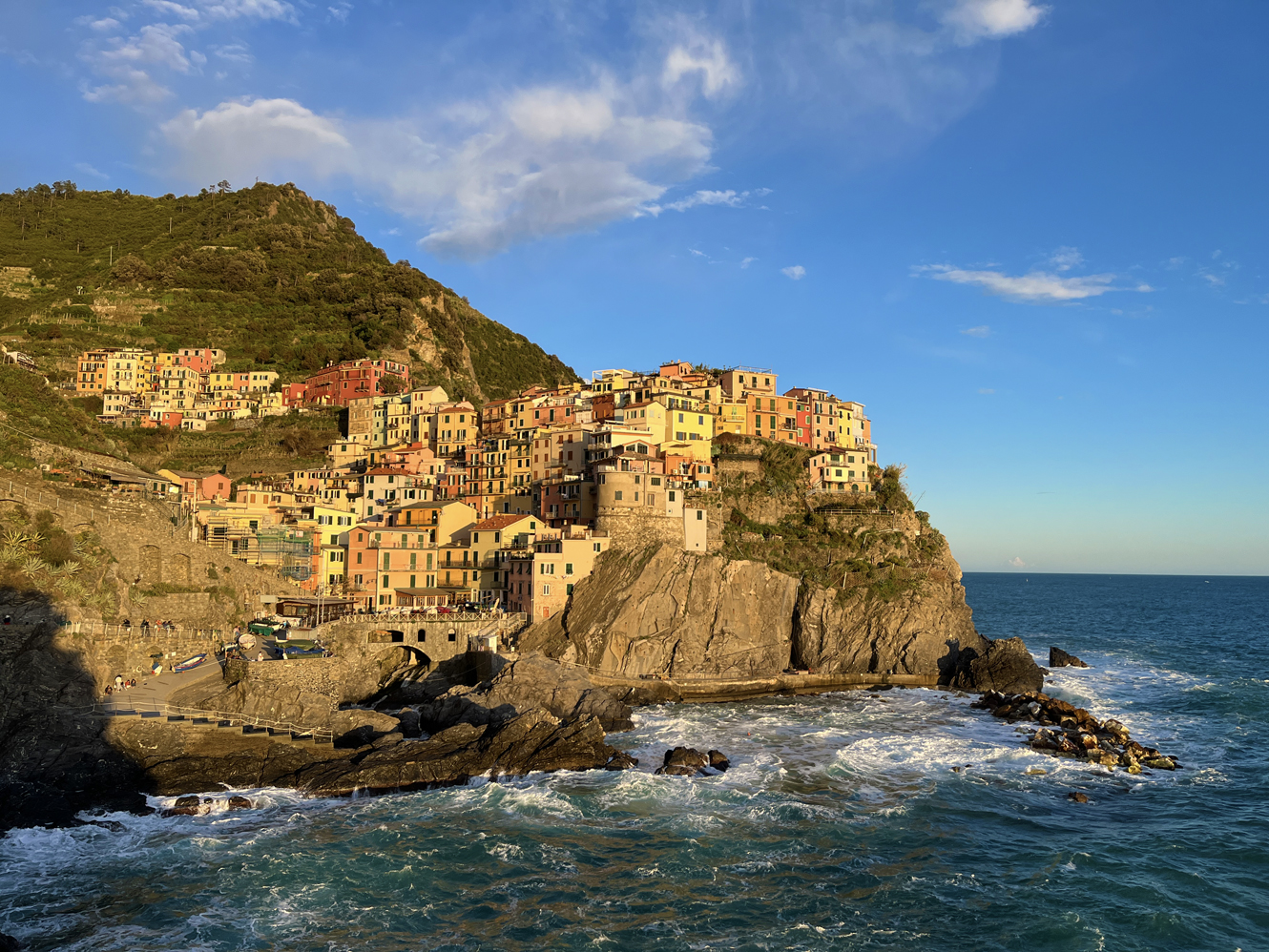
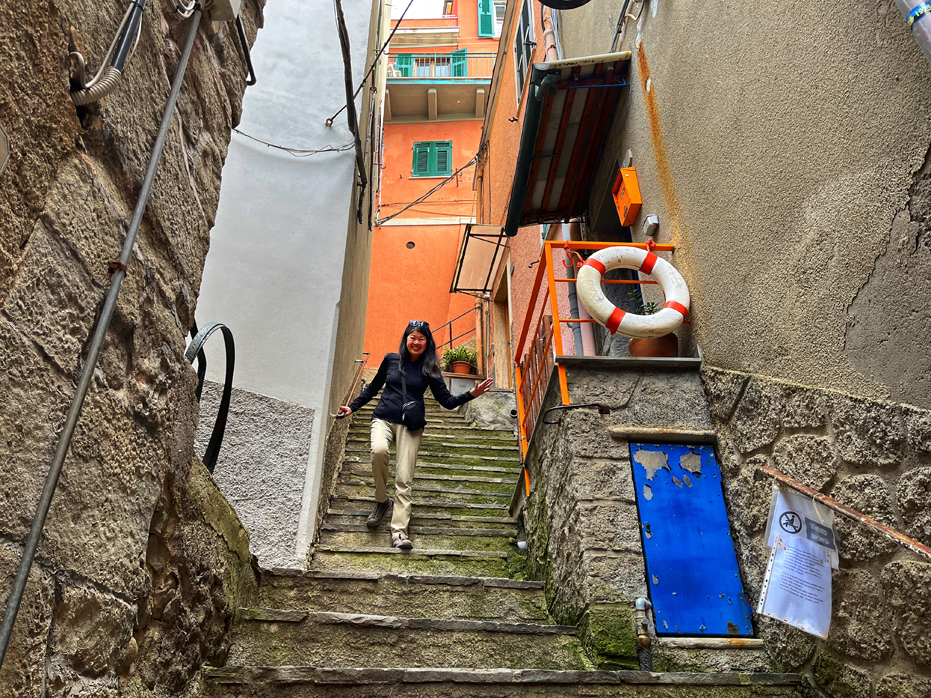
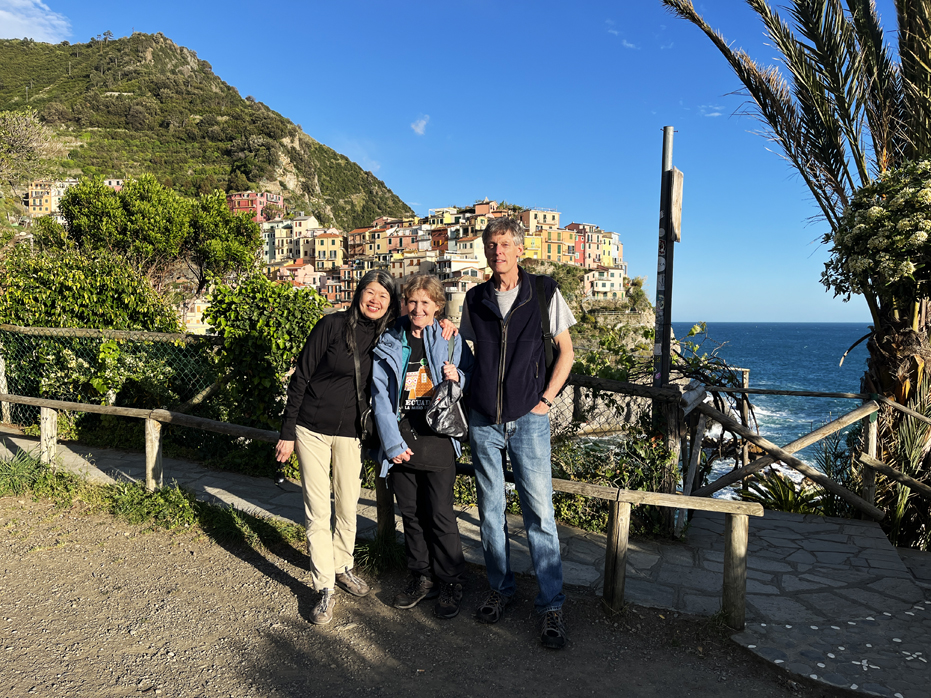

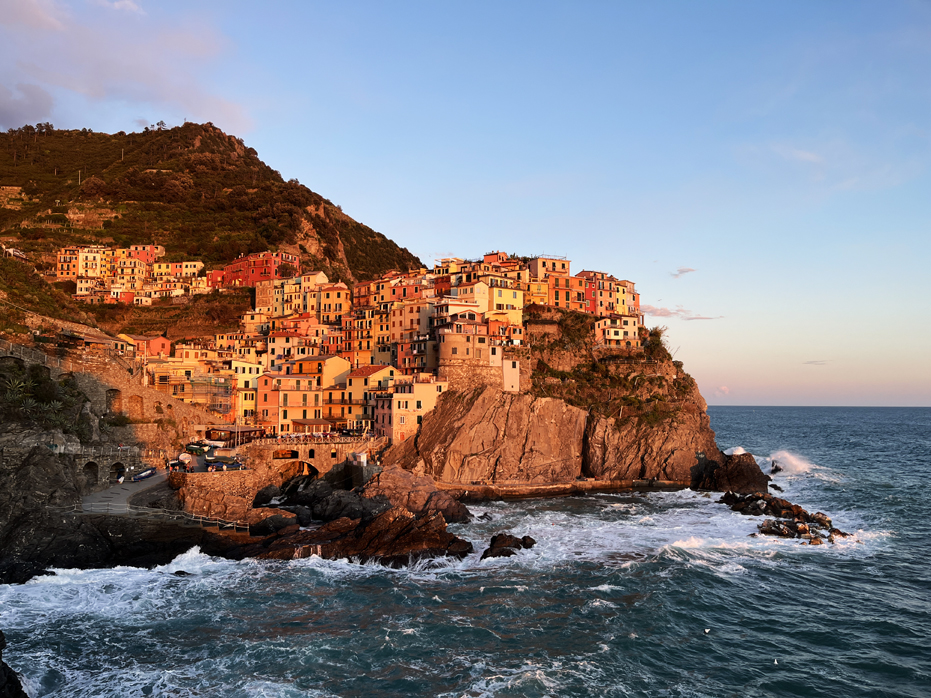


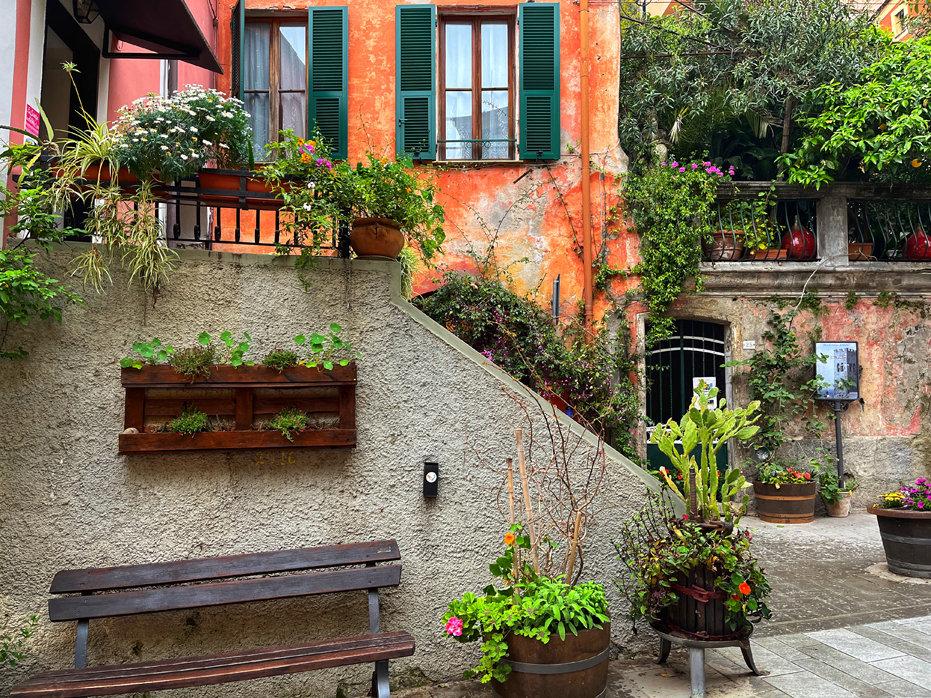
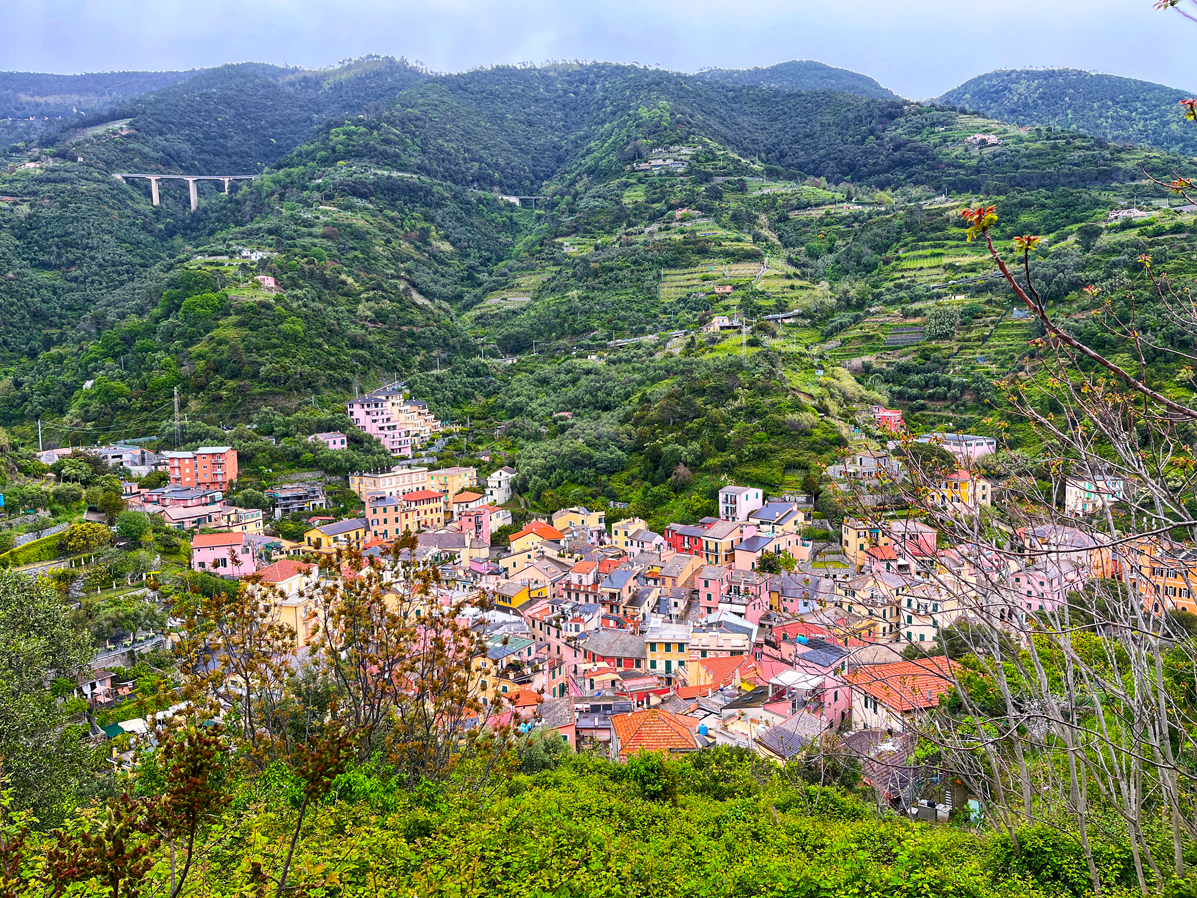


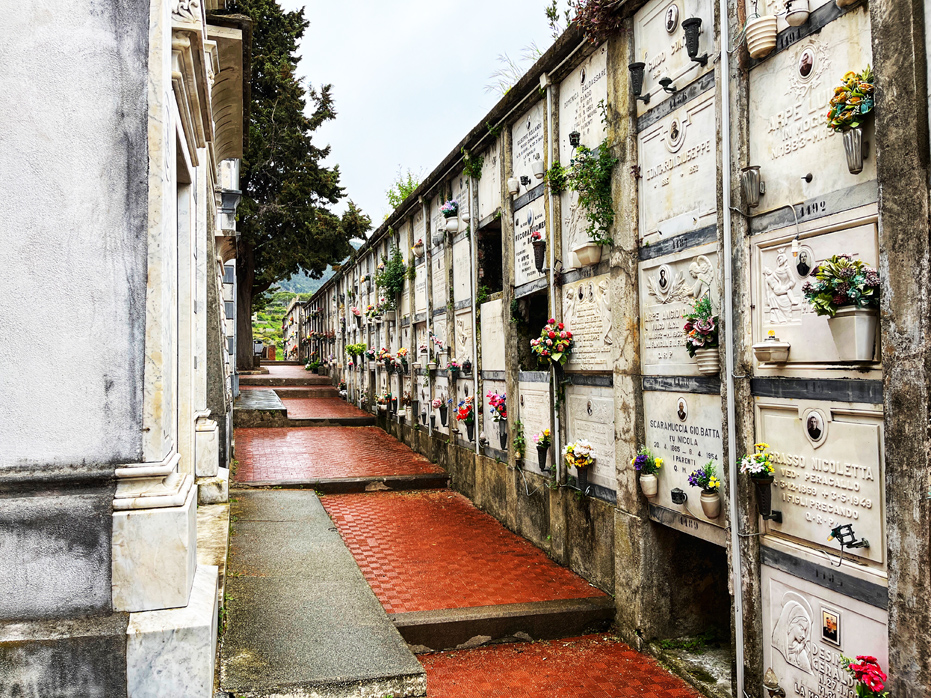
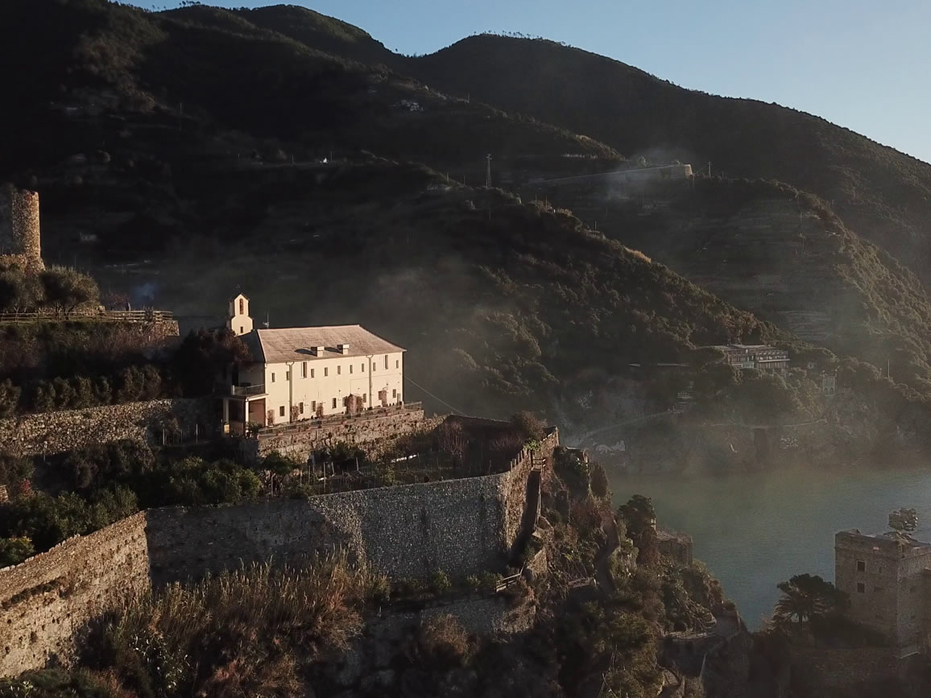
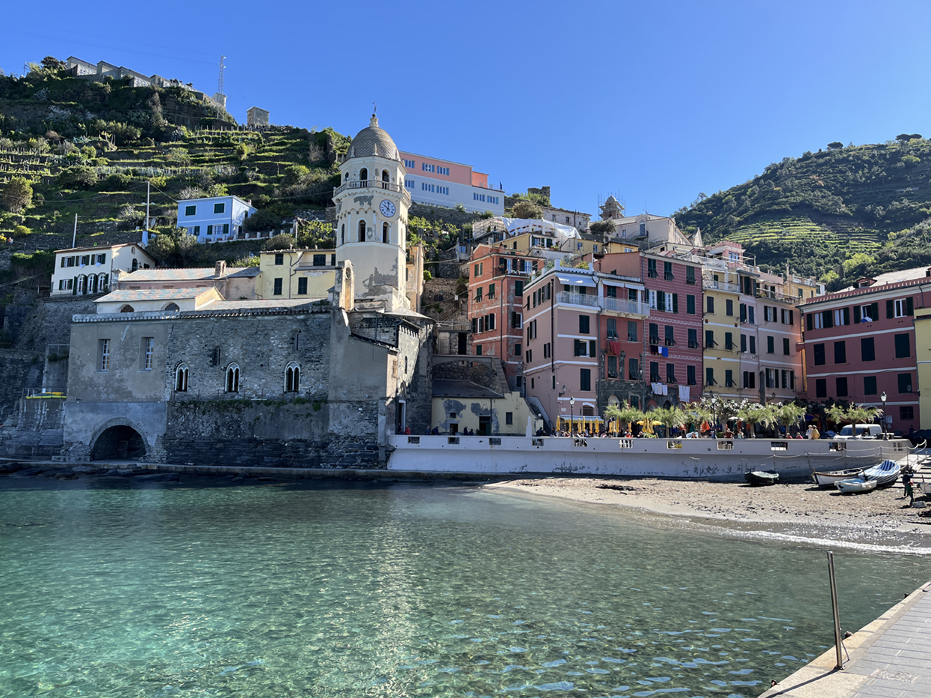
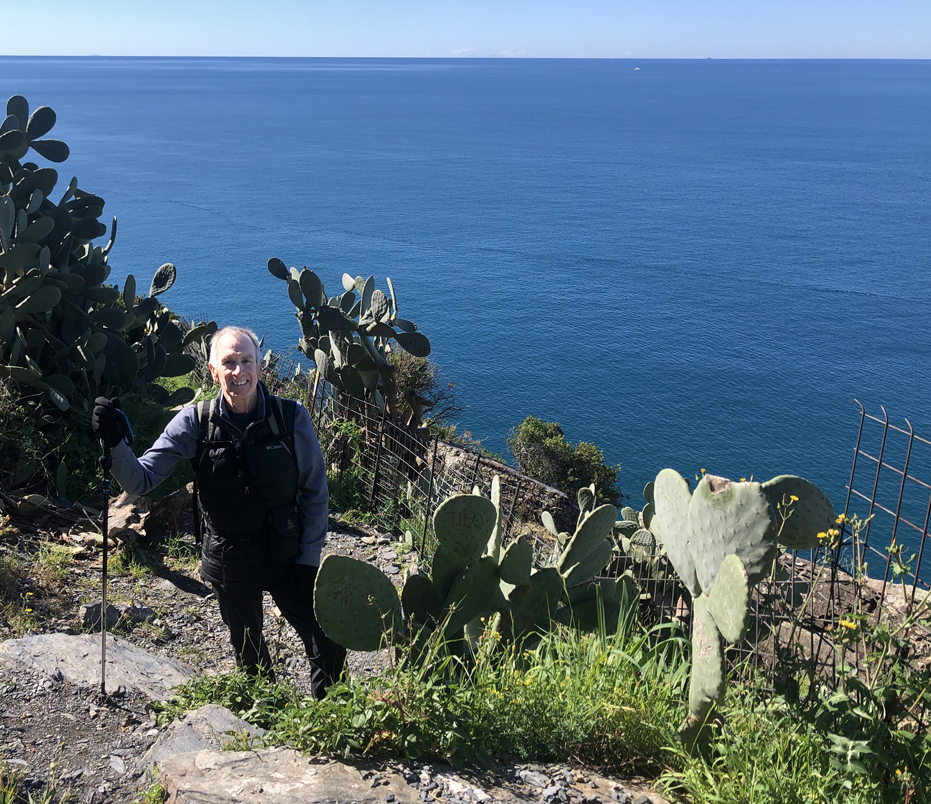
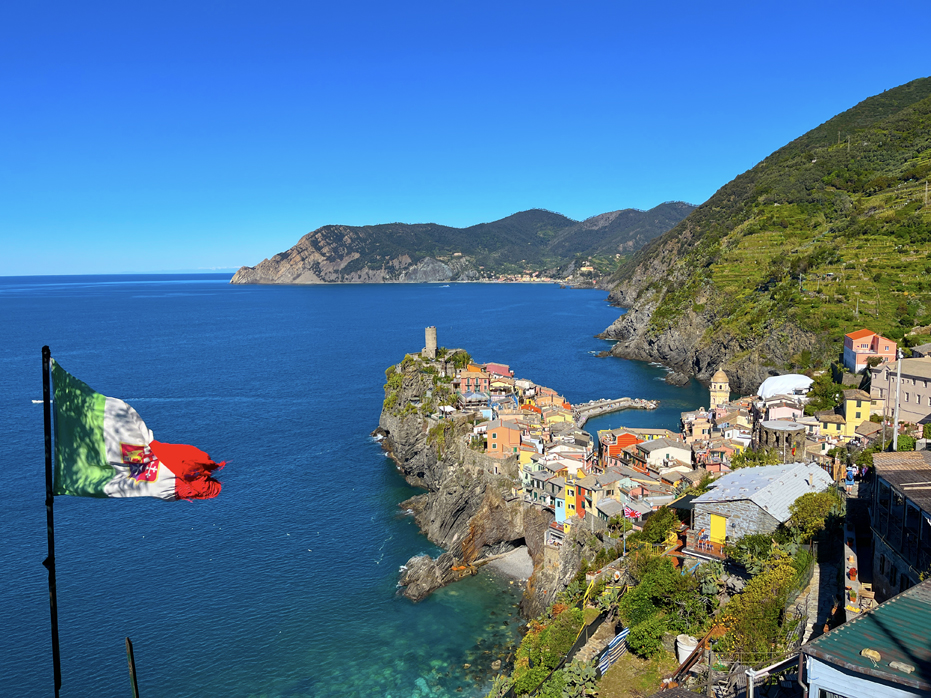
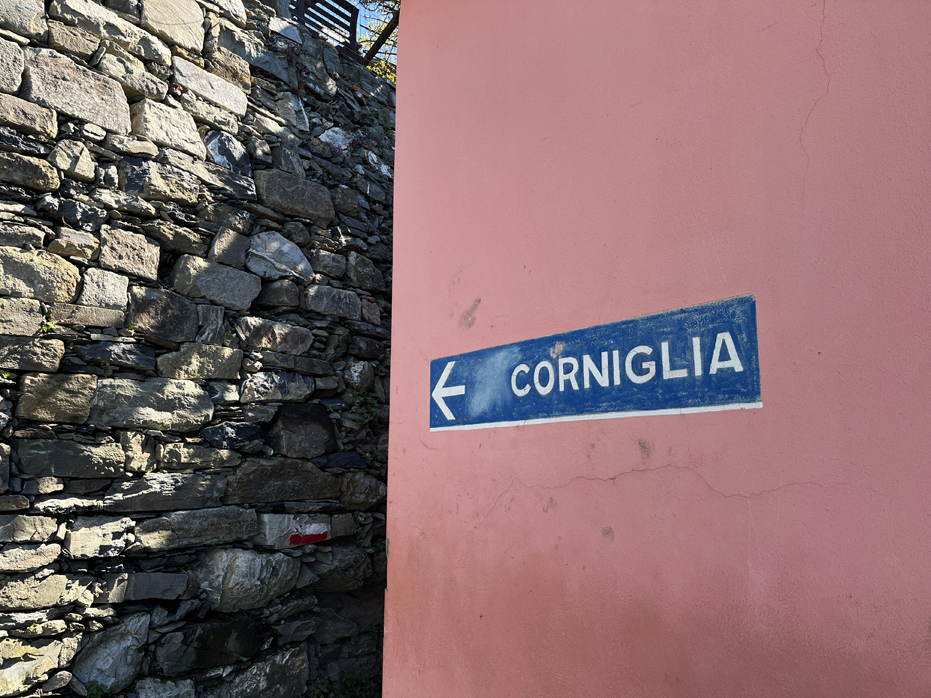

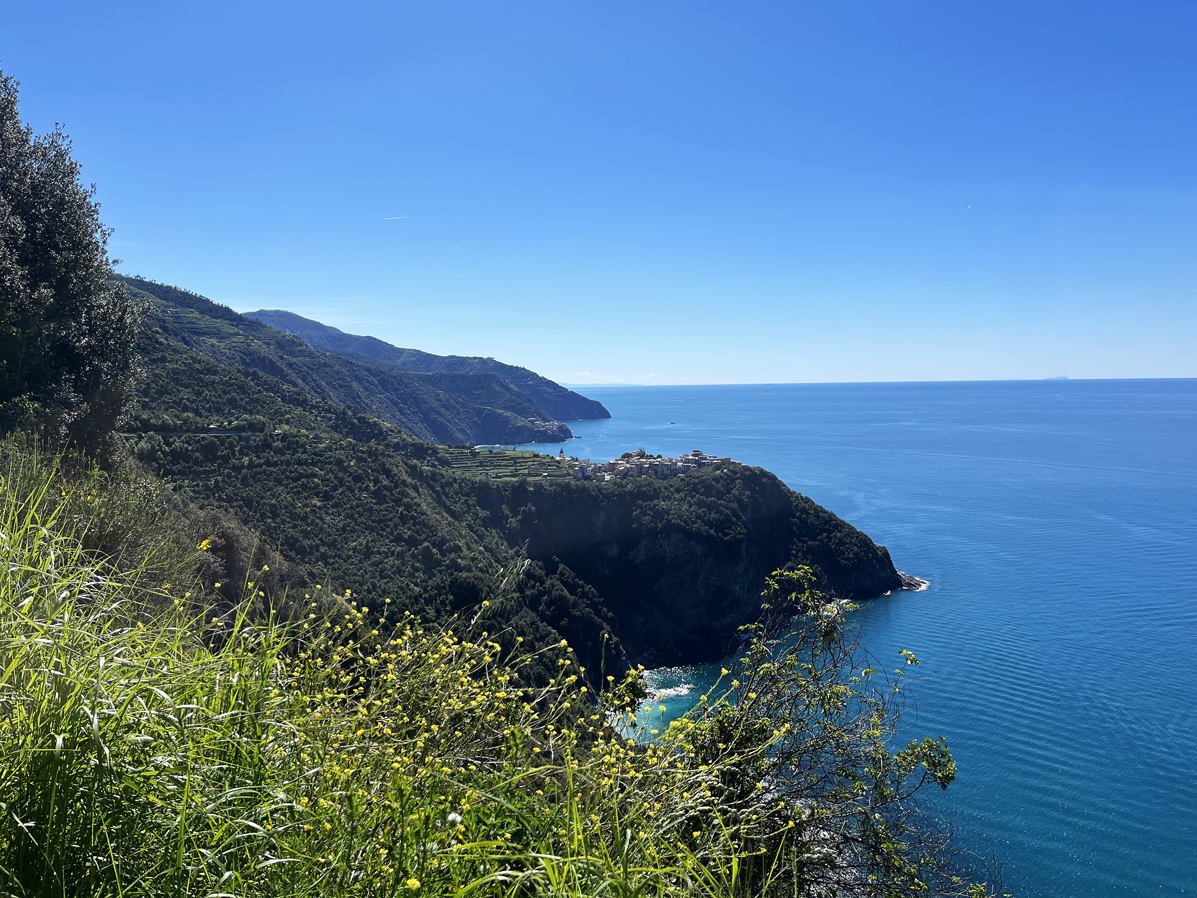
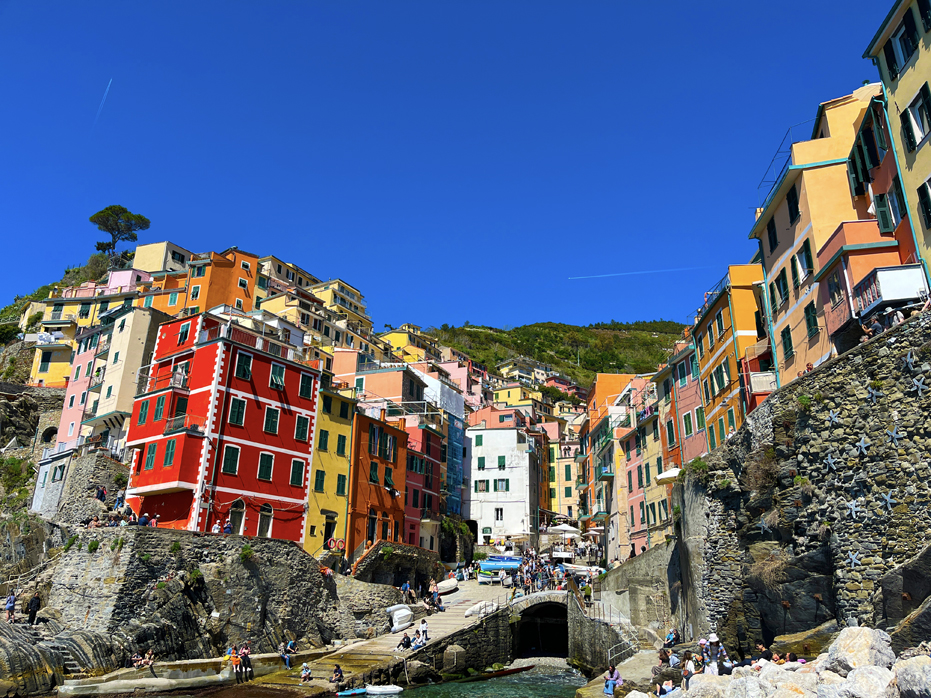

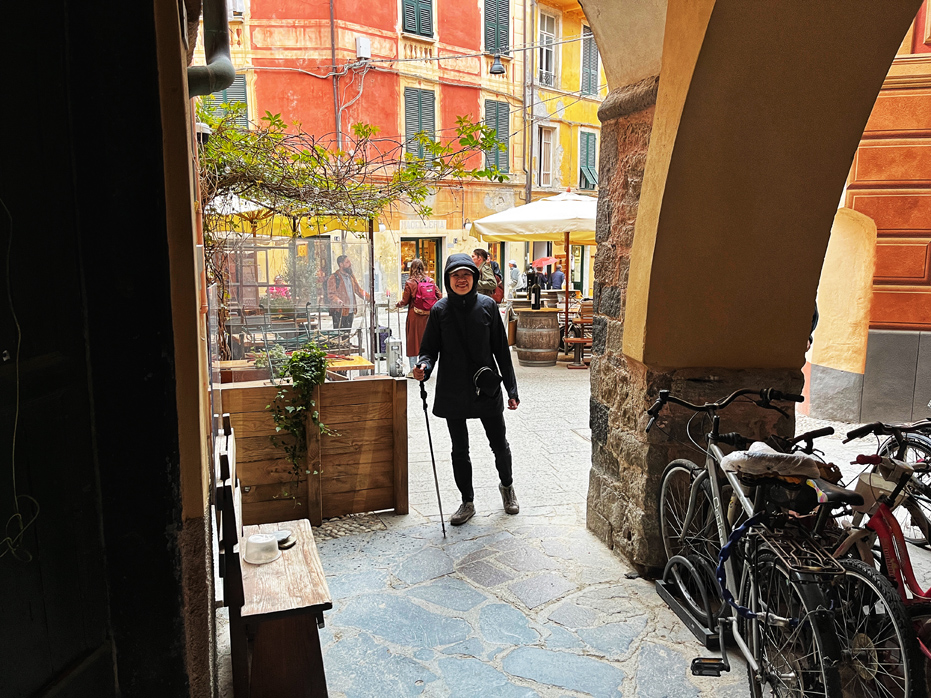
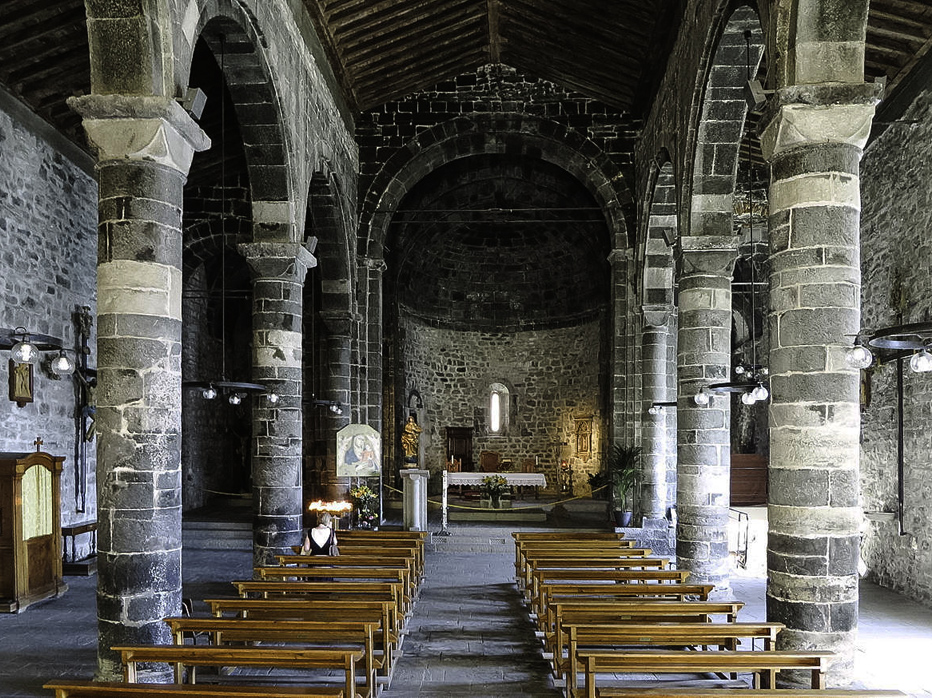

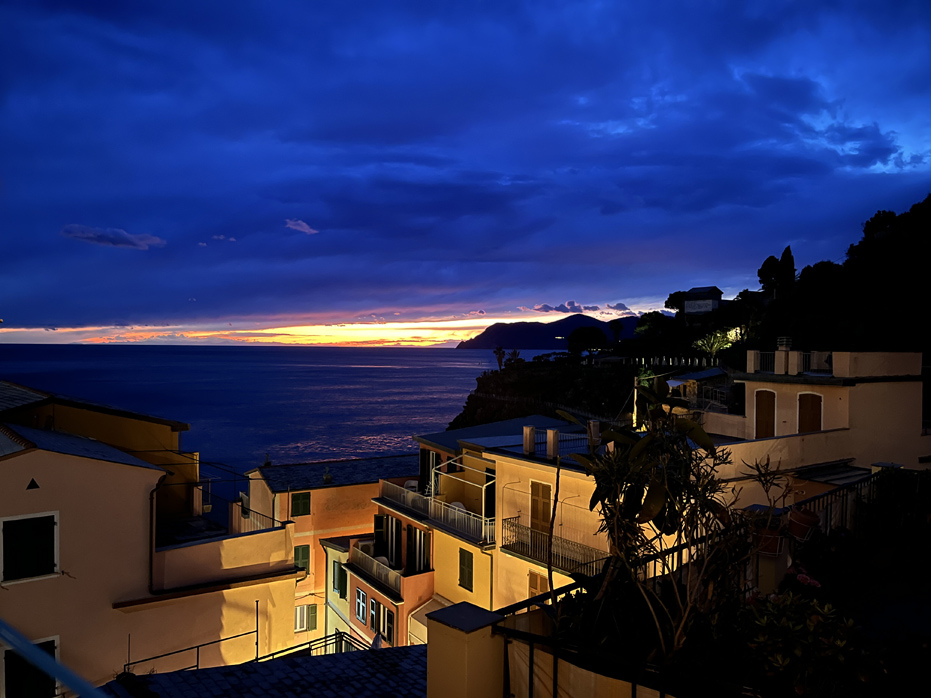
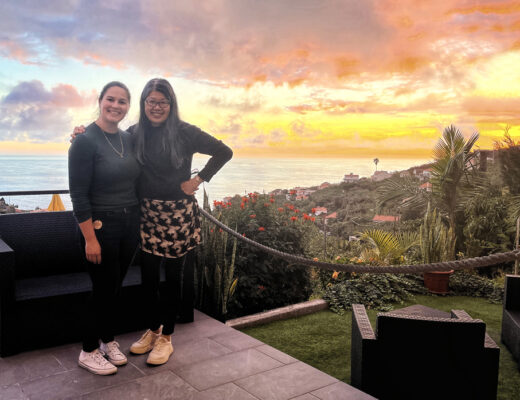
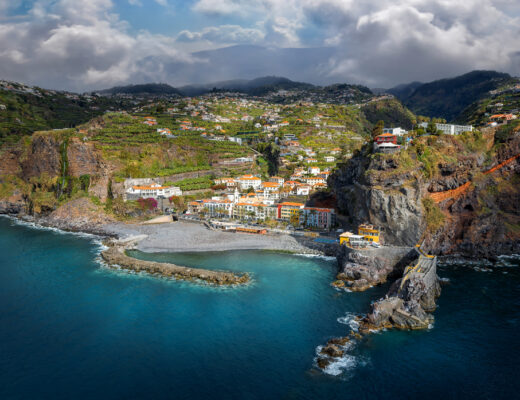
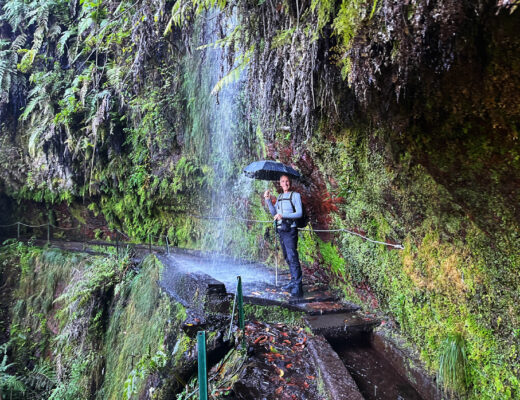
No Comments